
Medical negligence is actionable because the duty of care is tangible and the harm measurable. Legal negligence, by contrast, often hides behind the veil of “advice” especially in government departments including the armed forces, and paramilitary organizations where opinions by legal advisers (including Judge Advocate General, or JAG, officers) heavily shape life-altering decisions but evade scrutiny. This article argues that the law must create a clear accountability framework for legal advice that produces irreversible harm:
(1) Right of access for aggrieved persons to the advice that materially influenced a decision;
(2) Oversight mechanism to detect reckless or templated “cut-paste” advising; and
(3) Calibrated consequences for negligent advisory conduct, particularly within the military justice ecosystem where hierarchy amplifies impact.
We ground this in precedent. The Supreme Court’s jurisprudence on bias, proportionality, and fair procedure in courts-martial: Ranjit Thakur v. Union of India and Lt. Col. Prithi Pal Singh Bedi v. Union of India – continues to illuminate abuse of process. The Armed Forces Tribunal (AFT) has repeatedly set aside actions tainted by mala fides, denial of natural justice, or non-compliance with mandatory rules, and High Courts have recently told the Union to stop reflexively fighting AFT relief in pension and service-related matters. These strands collectively reveal a structural problem: decisions materially driven by legal opinions, yet those opinions are neither accessible to the aggrieved nor assessed for care, independence, and legality.
Legal negligence: twin of medical negligence

Everyone recognizes how negligent surgery can maim. But negligent legal advice especially within governmental hierarchies can cause injuries that are existential: unlawful detention; wrongful dismissal; reputational ruin; loss of pension; and cascading mental health impact. The injury does not recede when a court finally grants relief; time lost, careers derailed, and stigma endure. Yet, the “adviser” often escapes accountability by pleading non-binding status.
This non-binding fiction does not match institutional reality. Competent authorities frequently treat legal opinions as dispositive. In practice, discretion is exercised “as advised.” When the decision later collapses in court or the AFT, the adviser’s role vanishes into the record’s shadows.
Civilian–Military continuum:
A. Ministries, Departments, and Prosecution Cells
In civilian administration, legal branches vet disciplinary measures, blacklisting, tenders, vigilance referrals, and prosecution sanctions. Their documents often determine whether a proceeding is launched and how. Yet the affected person has no guaranteed right to see the substance of the advice that triggered state power against them.
B. The Armed Forces and Paramilitary: Hierarchy + Opaqueness
Opacity becomes acute in the armed forces and paramilitary forces (BSF, CRPF, ITBP, CISF, SSB, Assam Rifles, Coast Guard), where discipline is paramount and internal legal advice is institutionalized. The JAG system is the legal backbone: JAG officers advise convening authorities, vet Courts of Inquiry (CoIs), shepherd Summary of Evidence, and channel prosecutions. Their counsel shapes adverse ACRs, red/black-ink entries, discharges, court-martial convening orders, confirmation/mitigation advice, and pension decisions.
When such advice is perfunctory, mechanical, or biased, the damage multiplies: rank and file cannot freely litigate while in service; internal review defers to chain of command; and the decisive legal reasoning stays sealed away. The record then reads like an edict: “as advised.”
What Courts & AFT have been saying for decades?
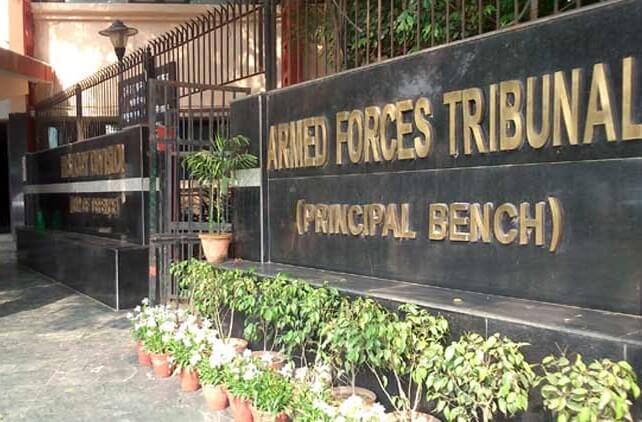
1) Bias and Proportionality in Military Justice
The Supreme Court in Ranjit Thakur struck down punishment where bias tainted the proceeding and the sentence was “shockingly disproportionate.” The Court emphasized that even in the armed forces, fairness standards apply and that disciplinary zeal cannot eclipse due process. In brief lines that continue to resonate, the Court applied a reasonable-person test to bias and brought proportionality into the military-justice lexicon.
Bias that would “vitiate the ultimate conclusion” cannot be ignored; punishment cannot be so disproportionate as to “shock the conscience.”
2) Systemic scrutiny of courts-martial
In Lt. Col. Prithi Pal Singh Bedi, the Supreme Court upheld the constitutionality of court-martial procedures but simultaneously spotlighted the need for procedural rectitude and meaningful safeguards. That case is routinely cited to remind authorities that military justice is justice nonetheless, requiring adherence to statutory form and fairness.
3) AFT’s day-to-day correctives against abuse of process
The AFT’s dockets are replete with cases where process failed not in the dramatic sense of constitutional invalidity, but in the quotidian breakdowns that wreck careers:
- Lt Col Jagmohan Singh v. Union of India: The AFT (Principal Bench) quashed four of five charges for lack of incriminating material in the Summary of Evidence, letting trial proceed only on one charge an implicit rebuke to over-zealous charge-sheeting not grounded in evidence.
- OA 173 of 2011, Chandigarh Bench (Col Randeep Singh Guleria): A commissioned officer sought quashing of an adverse confidential report; the judgment discusses how such career-critical documents must be handled lawfully, with due appraisal and free from collateral purposes.
- OA 953 of 2014 (Order dated 26 Oct 2023, Chandigarh Bench): The AFT found mala fide intention in the commanding officer’s actions; the order of discharge was set aside—an unmistakable finding that process was abused.
- OA 752 of 2022: The AFT noted the applicant was not permitted to cross-examine witnesses and flagged violations in conducting the Court of Inquiry a classic natural-justice lapse within a supposedly routine internal process.
- Indian Express report (Apr 19, 2024): The AFT quashed the court-martial and dismissal of a Military Intelligence Lt Col, noting violation of mandatory statutory provisions underscoring that corners cut at the advisory and convening stages have severe downstream effects. (A news report, but it accurately tracks a judicial act.)
4) High courts nudging against adversarial reflex
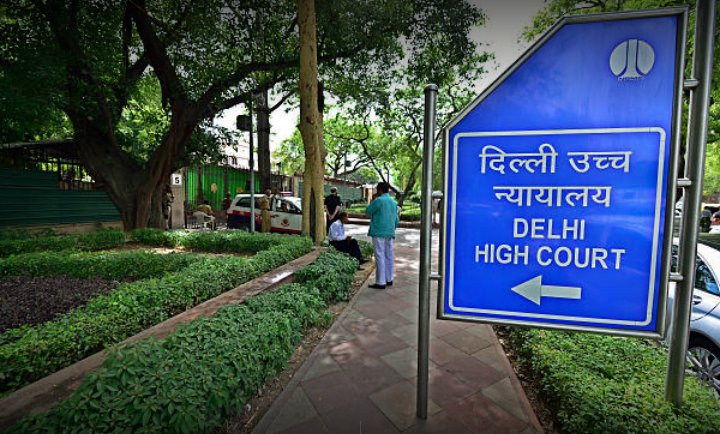
In August 2025, the Delhi High Court told the Union government to “graciously accept” AFT decisions in appropriate cases instead of mechanically litigating every relief order particularly in pension attribution matters. This is a quiet but telling admonition about bureaucratic and advisory mindsets that reflexively oppose relief, regardless of merits.
Authorities should not take an “overly technical stance to deny benefits” when AFT has applied settled principles, the Court indicated.
Where the process fails: the advisory black box
A. CoI–SoE–CMP (Court-Martial Process) Pipeline
In the Army (and mutatis mutandis in other forces), a Court of Inquiry (CoI) often sets the tone. It determines whether there’s substance; it affects how Summary of Evidence is scoped; it informs the convening authority. JAG advice accompanies every step. If that advice is templated, inattentive to exculpatory material, or casually dismissive of procedural rights (cross-examination, supply of documents, impartiality of Presiding Officer/technical members), the pipeline produces an engineered outcome.
AFT matters show these recurring defects:
- Denial of cross-examination or non-supply of vital documents (AFT has flagged both).
- Mala fides and command influence contaminating ostensibly “fact-finding” processes, later bleeding into discharge or trial.
- Over-charging with scant material (Jagmohan Singh).
B. Adverse ACRs and “Moral” Labels
Adverse ACRs often based on opaque inputs can freeze promotions and stigmatize careers. When such entries are later found biased or procedurally infirm, the human loss is irreversible. The Supreme Court and AFT have not hesitated to expunge entries or demand reconsideration when bias surfaces; the very need for such intervention signals earlier advisory or reviewing failures.
C. Disproportionate punishments
Ranjit Thakur’s proportionality doctrine remains a failsafe: if punishment “shocks the conscience,” courts will intervene. But that intervention usually occurs years later; the initial advisory failure treating proportionality as an afterthought inflicts damage that no later judgment can fully repair.
Special responsibility of JAG officers
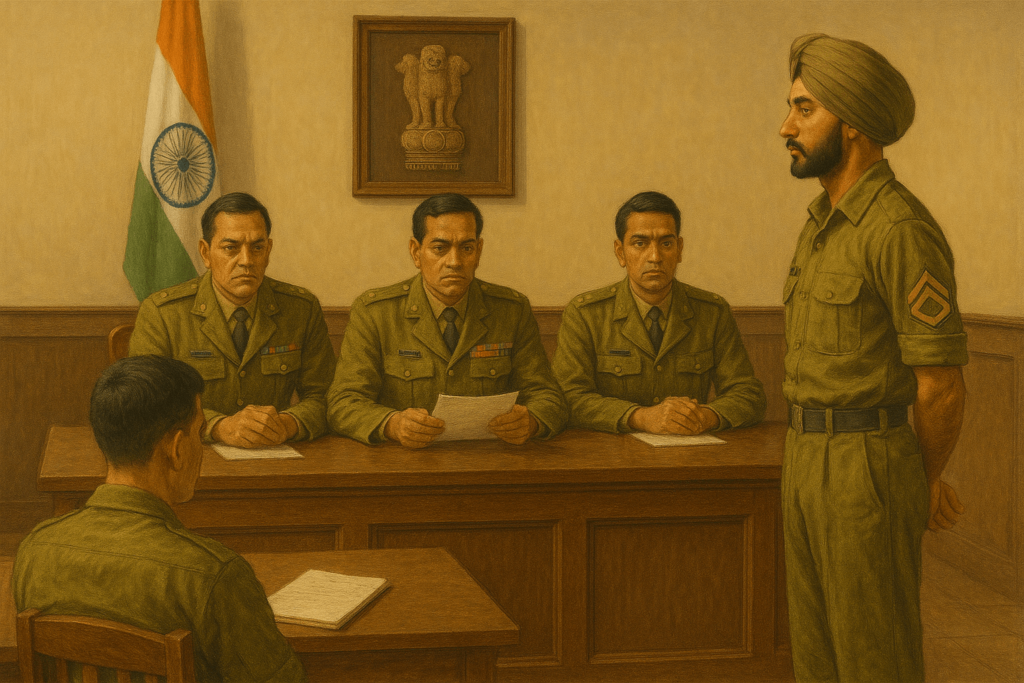
JAG officers are not mere scribes; they are custodians of legality within a rigid hierarchy. They advise convening authorities, frame charges, vet evidence, guide sentencing appropriateness, and opine on confirmation or mitigation. With such proximity to decision-making power, fiduciary standards apply: independence, thoroughness, and candour about risks and rights.
Yet, today:
- Advisory notes are typically inaccessible to the aggrieved officer or jawan shielded by “confidentiality” not always rooted in operational necessity.
- Template advice proliferates “copy-paste” paragraphs that ignore case-specific facts, proportionality, and alternatives (e.g., counselling or medical evaluation before discharge for “red-ink” patterns). Even the Ministry of Defence’s own discussions on discharge policy caution against mechanical reliance on red-ink entries without examining pattern, context, and mental health indicators.
- Command influence can steer the process, tacitly pressuring legal branches toward a foregone conclusion—precisely the concern the Supreme Court and AFT keep flagging in decisions on bias and mala fides.
Paramilitary and Police Forces: mirroring the risks
Paramilitary forces wield quasi-military discipline with less public visibility. Their legal cells often import the military template: CoIs, disciplinary inquiries, and opinions that determine suspensions, dismissals, and pension outcomes. Without statutory rights of access to the underlying advice, aggrieved personnel cannot test whether adverse decisions were born of careful legal analysis or of mechanical “clearance.” The oversight gap is wider because civil courts generally defer to departmental expertise unless egregious illegality or mala fides is shown.
The human cost of “we’ll fix it on appeal”
AFT relief or a High Court order comes too late to recover lost postings, missed courses, or career-ending stigmas. Consider:
- Discharge set aside for mala fides (OA 953/2014, 26 Oct 2023): what of the months/years in limbo?
- CoI violations (OA 752/2022): how many promotions or opportunities were foreclosed while a defective process ran its course?
- Court-martial quashed for mandatory-rule breach (2024 case report): what of incarceration time and reputational collapse?
If the law can hold doctors liable for negligent acts producing irreversible harm, it must articulate limited, carefully-calibrated liability for legal advisers whose reckless or bad-faith advice predictably causes serious rights-injury.
Legislative blueprint (civil, military, & paramilitary)
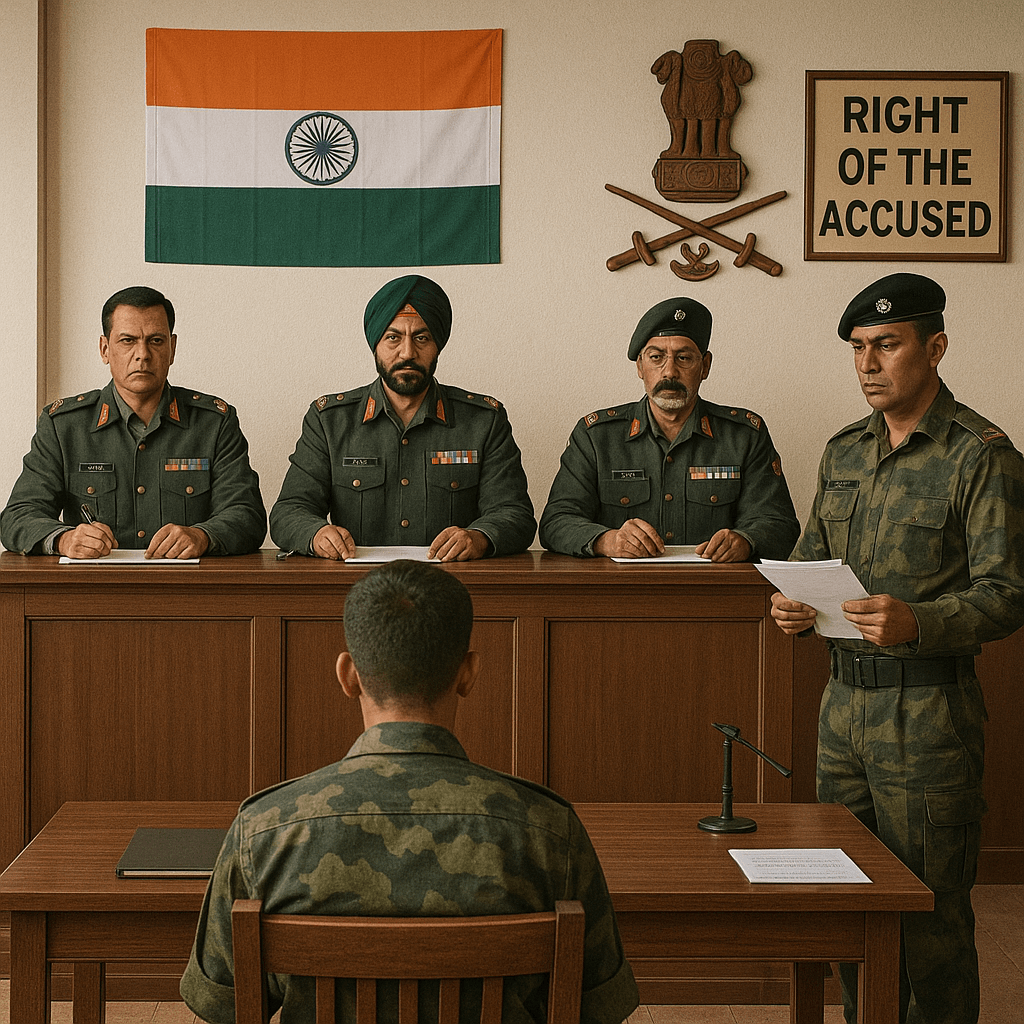
1) Define “Advised Decision”
Any administrative, disciplinary, or prosecutorial action materially influenced by written or recorded legal advice (including JAG/legal cell opinions) concerning a specific person.
2) Right of Access & Reasons
- Disclosure Duty: On request by the affected person, disclose the advice with necessary redactions for classified operational specifics.
- If disclosure is denied (national security/privilege): Require an independent reviewer (e.g., a retired AFT judge or High Court judge) to inspect the advice in camera and certify whether its core reasoning was lawful, evidence-based, and proportionate.
Rationale: This meets the Supreme Court’s enduring call for fairness and combats the pattern of “mechanical” departmental denials that the Delhi High Court recently admonished.
3) Standard of Care and Safe Harbour
Standard: Legal advisers must
- (a) identify governing statutes/rules;
- (b) flag mandatory procedural steps (e.g., cross-examination rights in CoI, supply of documents, impartiality of members);
- (c) analyse proportionality; and
- (d) Record reasons addressing exculpatory evidence.
- Safe Harbour: Honest professional judgment is protected. Liability attaches only for gross negligence (e.g., advising to proceed despite known mandatory-rule breaches) or bad faith (e.g., advice tailored to achieve a pre-decided punitive outcome).
4) Consequences
- Internal: Censure, bar from advisory roles, or adverse ACR for demonstrated gross negligence/bad faith.
- External: In rare, high-impact cases (wrongful incarceration/dismissal), a statutory compensation regime by the State with a right of State recoupment against advisers for gross negligence/bad faith mirroring vicarious liability principles.
5) Military/Paramilitary-Specific Safeguards
- Armed Forces Legal Oversight Board under the AFT framework to audit advice in cases culminating in dismissal, imprisonment, or pension forfeiture.
- Mandatory Proportionality Review at confirmation stage, with a tick-box matrix built from Ranjit Thakur factors.
- CoI Integrity Rules: Nullify proceedings where cross-examination was denied or the panel composition presents reasonable apprehension of bias—echoing AFT patterns and Supreme Court bias doctrine.
- Medical & Mental Health Gateways for conduct-based discharges referencing red-ink entries; require screening for service-related stress or psychiatric issues before punitive separation, consistent with policy discussions already flagged in defence circles.
6) Data and Transparency
- Annual public report (with anonymization) on
- (a) how often advice was disclosed or reviewed,
- (b) defect patterns (e.g., CoI violations recurring), and
- (c) corrective action taken. This will deter “cut-paste” opinions and reward careful lawyering.
Anticipating objections
Objection 1: “Disclosure will chill candid advice.”
Answer: Doctors still document risks candidly despite liability. The proposal preserves candour by penalizing only grossly negligent or bad-faith advice; routine errors remain shielded by safe harbour. Redactions and in-camera review protect secrets while exposing illegality.
Objection 2: “National security requires secrecy.”
Answer: Yes and the model respects that. The right is to the reasoning, not operational details. Independent judicial eyes can verify legality without public disclosure.
Objection 3: “Courts already correct errors.”
Answer: After years of damage. The blueprint prevents harm by aligning adviser incentives ex ante and creating an internal audit culture. The AFT and Supreme Court doctrine (bias, proportionality, natural justice) become built-in checklists, not after-the-fact lifeboats.
Select authorities
Bias & Proportionality: Ranjit Thakur v. Union of India, (1987) 4 SCC 611: bias vitiation; “shockingly disproportionate” punishment standard.
- Systemic Safeguards in Military Justice: Lt. Col. Prithi Pal Singh Bedi v. Union of India constitutionality affirmed with a stress on procedural fidelity.
- AFT Correctives:
- Jagmohan Singh: charges quashed for lack of material.
- OA 953/2014 (2023): CO’s mala fides; discharge set aside.
- OA 752/2022: CoI violations (no cross-examination).
- AFT quashes court-martial (2024 report) mandatory-rule breach.
- High Court Signal on Anti-Relief Reflex: Delhi High Court’s “graciously accept AFT decisions” admonition (Aug 2025).
AFT benches also frequently canvass review powers to correct miscarriage of justice or abuse of process, drawing on higher-court principles even where specific procedural rules are sparse an important recognition that tribunals must possess limited self-correction capacity to defeat unfairness.
Practical templates
A. Advisory Check-Matrix for JAG/Legal Cells (extract):
- Statute/Rule Map: Identify every mandatory step (e.g., Army Rules on CoI, cross-examination, supply of documents).
- Natural Justice: Were witnesses offered for cross-examination? Any bias concerns about panel composition?
- Evidence Sufficiency: Does Summary of Evidence actually support each charge? (Jagmohan’s cautionary note).
- Proportionality: Would the contemplated punishment survive Ranjit Thakur scrutiny?
- Human Factors: Any indicators of service-related stress/psychiatric issues calling for medical pathway rather than punitive discharge?
- Reasoned Recommendation: A paragraph on alternatives—censure, counselling, course correction—before the nuclear option.
B. Disclosure Protocol (extract):
- Produce the advisory note with redactions limited to operational details or third-party identifiers; append a public-interest override mechanism through a neutral reviewer if redactions would gut the reasoning.
Conclusion: Transparency and Faith Run Together
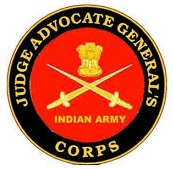
The foundational promise of a constitutional democracy and of the uniform is that power is exercised lawfully, fairly, and proportionately. The jurisprudence of the Supreme Court and the steady pressure of the AFT reveal a chronic blind spot: the unexamined power of legal advice. It is time to close that gap.
A statutory right to know the legal reasoning that determined one’s fate; an independent oversight path that respects secrecy while rejecting illegality; and a narrow regime of consequences for grossly negligent or bad-faith advice these are not radical demands. They are the minimum needed to halt avoidable injuries and restore confidence.
Doctors can be sued when negligence maims. Lawyers especially those ensconced within the State and the Services should not be uniquely immune when their negligence, bias, or mechanical templates maim a career, a reputation, or a life.


A good write up on the apathy of Military Justice System which I believe is made to cause injustice. Particularly, except in the cases where the conscience of a Judge Advocate General Branch officer is guided by highest level.of morality and constitutional ethos, the Officers of Judge Advocate General Branch are mainly responsible for ruining the lives of thousands of soldiers by giving wrong and malicious advise to the concerned officer for which most of them even become a part of conspiracy against the alleged accused who in fact is the victim of atrocities of an authority under the garb of constitutional protection as public servant. The JAG Branch of the Armed Forces is basically a curse for the humanity and justice as such it need to be replaced with new system having complete advisory system from the Ministry of Law and Justice.
This article is written very well i feel author took an extensive efforts to pen down it so elaborative more analytical lucidly narrated just incredible
Extremely useful, concise chronicle of principles of justice explained. Thank you for the educative article.
वीर सपूतों के हितार्थ और देशहित में सराहनीय लेख ……👌👌👌👏👏👏सैल्यूट!